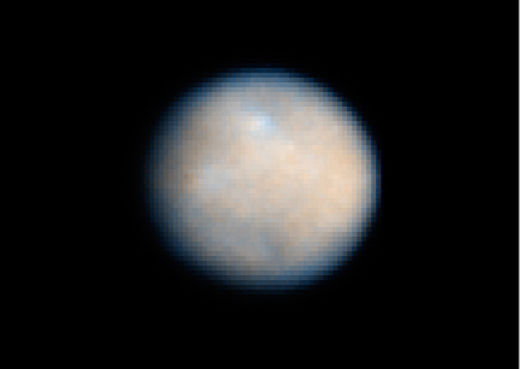Ceres has long been thought to contain substantial quantities of ice within its body, but this is the first time such releases have been detected.
The discovery was made by Europe's infrared Herschel space telescope, and is reported in the journal Nature.
Scientists believe the vapour is coming from dark coloured regions on Ceres' surface, but are not sure of the cause.
One idea is that surface, or near-surface, ice is being warmed by the Sun, turning it directly to a gas that then escapes to space.
Comment: This is absurd. If it is water and ice they're seeing, it cannot be "warmed" into a gas in the near-absolute zero of space! Ceres would have no atmosphere, remember?...
"Another possibility," says the European Space Agency's Michael Kuppers, "is that there is still some energy in the interior of Ceres, and this energy would make the water vent out in a similar way as for geysers on Earth, only that with the low pressure at the surface of the asteroid, what comes out would be a vapour and not a liquid."
The quantity being out-gassed is not great - just 6kg per second - but the signature is unmistakable to Herschel, which was perfectly tuned to detect water molecules in space.
The telescope's observations were made before its decommissioning last year.
Scientists will get a better idea of what is going on in 2015, when Ceres is visited by the American space agency's Dawn probe.
The satellite will go into orbit around the 950km-wide body, mapping its surface and determining its composition and structure.
"It will be able to observe those dark regions at high resolution, and will probably solve the question of what process is creating the water vapour," explained Dr Kuppers.
Read the rest of this here.




So, what did these instruments detect: H20 (water) or HO (radical of water)? Did they also detect H30?
Water, at Standard Temperature and Pressure, to my recollection of organic chemistry, is a soup of H0, H20 and H30.